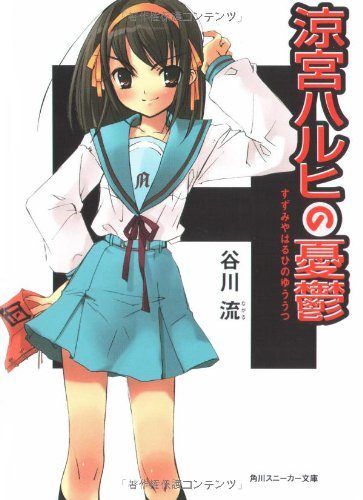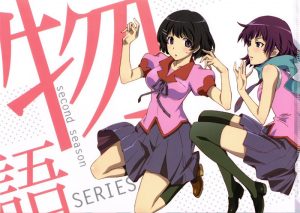
The Melancholy of Haruhi Suzumiya has got to be one of the most influential modern anime series. Its combination of the malaise of a boring high school life with its tongue-in-cheek metaphysical themes began the light novel boom of the mid-to-late 2000s. However, there is one crucial difference between Haruhi and current light novel adaptations: while Isekai are pure self-insertion fantasies, Haruhi was actually a commentary on self-insert fantasies. At the time, nothing had ever been seen like The Melancholy of Haruhi Suzumiya, and as a result, it completely exploded in popularity, leading to spinoff series, sequels, and movies.
Of course, The Melancholy of Haruhi Suzumiya also has one of the most notoriously overly-complicated narrative structures in anime history. Seriously. 800 episode shounen battle series like One Piece and Naruto have a more straightforward plot than the 24 episodes of Haruhi Suzumiya, and 8 of those episodes are just replications of the same events! So we’re going to help you out a bit here and get it sorted out over the course of 2 articles. Today, we’re looking at why it’s so messy and walk you through the first season.
Why is the Order so Messed Up?
Everything in Haruhi Suzumiya revolves completely around its titular character, because she is God. There’s one catch: she doesn’t realize it. Haruhi hates the life she currently lives because it’s so boring and only wishes to meet someone that can prove to her that there’s more to the world. An Esper, a time traveler, an alien; just someone. Of course, Haruhi also doesn’t notice that she has willed those exact same archetypes to her side. Everything is at her whim.
This led to the series being aired completely out of order when it was first shown. It was meant as a gag on the viewer. Because Haruhi was in complete control of everything, even the order of events got shifted around. It was a fun gimmick due to how it could create a satisfying narrative structure using a non-linear format. Major plot points that occurred before the aired episode would get hinted at due to naturally coming up in conversation. It felt like it was “foreshadowing” events that had actually occurred, which led to a lot of people doing their own detective work to piece the show together. The second season would continue this and fits into the timeline of the first season.
In What Order Should You Watch the First Season?
There are two ways you can watch The Melancholy of Haruhi Suzumiya. You can watch it in the DVD order, which is the chronological order. You could also submit to Haruhi’s whims and follow the messed up broadcast order. There are arguments for both. Frankly, the show is much less confusing if you watch it in its timeline sequence, and it’s not as if you’ll lose out on the main themes of the show. The first two episodes were aired back-to-back anyway, and those are the episodes that set the overall narrative into motion. All episodes afterward are essentially individual stories that could probably happen at any point, so jumping around in the timeline doesn’t really change that much anyway.
However, we really do recommend that, if you don’t mind the hassle, you watch it in the broadcast order. This sequence starts with episode 11, then followed by 1, 2, 7, 3, 9, 8, 10, 14, 4, 13, 12, and finally the two-parter 5 and 6. Pretty much every single order you could follow begins with episode 11 regardless (even the famously rigid DVD release) because it sets the tone for the entire show, mixing the plain, unremarkable amateur film-making of the SOS Brigade with minor hints of the supernatural getting mixed in.
Beyond that, even if they happen early in the timeline, 5 and 6 were clearly written as the emotional climax of the show and shape the way you view Kyon’s and Haruhi’s interactions with each other throughout the show. This revelation would not have the impact it has if you knew about it beforehand, and frankly, doesn’t leave material that’s actually all that interesting for the rest of the show. It’s not that it’s bad, as the characters are still fun and the themes are still insightful. It’s just that there’s no real emotional payoff otherwise. The narrative was written around this strange order.
Final Thoughts

Next time, we’ll take a closer look at the second season, the movie, and The Disappearance of Nagato Yuki-chan, as, yes, even these have moments that take place within the timeline of the first season. Don’t worry: we’ll get this straightened out!



